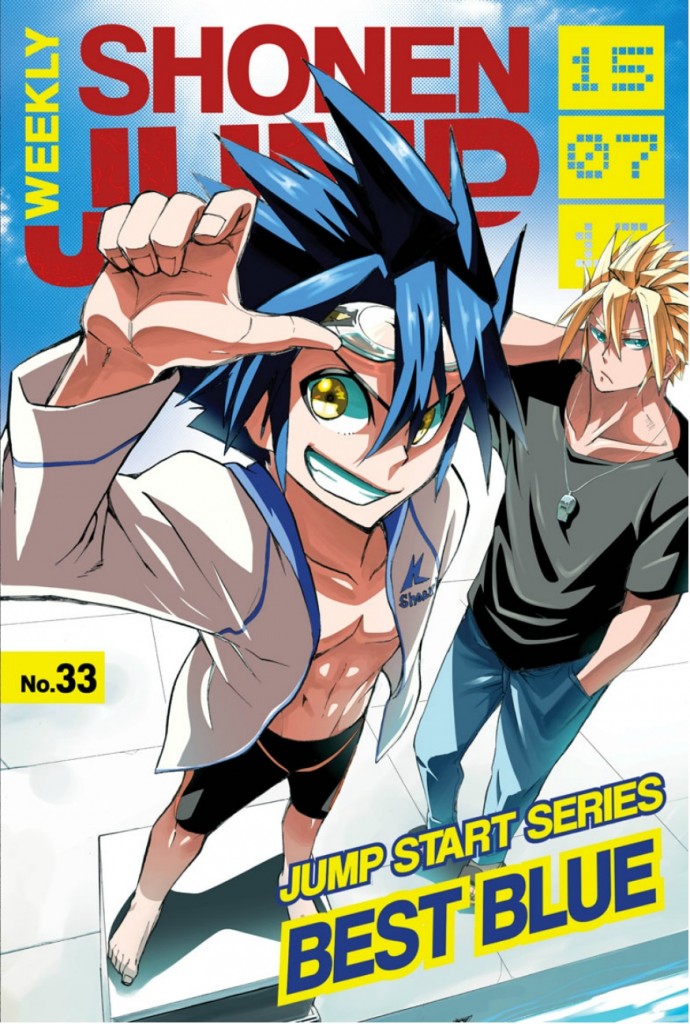07.14
It feels like a long, long time since we’ve had an issue that didn’t go over 200 pages, but here we are. Because of various circumstances, neither World Trigger, Nisekoi, or One-Punch Man were in this week’s issue, leaving the total series count to be below double digits for the first time in ages. If there wasn’t a Jump Start debuting or a Jump Back being run, this issue would have only been 6 series full and less than 130 pages! Not that I’m complaining, necessarily. More content does not mean more quality, and that’s true of the opposite as well. Despite being half as long as last week’s issue, this one was easily better, sporting a strong set of chapters from nearly every series. Besides, these take a lot of time to write, and since I’ve got a busy week before me, I’m relieved to have an issue that I can read and review more quickly than usual.
But since I do have more time than usual, I’ll briefly comment on some Jump-relevant stuff. I didn’t manage to write about it for the Clusterfuck, but I think Dragon Ball Super is a super disappointment. A re-telling of the movies with more filler and less impressive animation? Come on, Toei, who wanted that?! That first episode should’ve promised us an exciting adventure, side-splitting humor, and some friggin’ epic action; we want something new, not slow set-up and re-treads! But as lame as the premiere was, I haven’t written off the show just yet. The second episode was a lot more fun than the premiere, for the sheer humor value of seeing Vegeta out of his element and going shopping and being on a party boat. Sure, they didn’t go nearly as far as they should’ve with it, but I appreciated the set-up of it being a callback to Vegeta’s promise to Trunks before the Tenkaichi Budokai and a lot of the more subtle character moments for him in the episode. Him acting so super tsundere about the whole thing was rather adorable too. It’s not the greatest of stuff, but it was more fun and hit better character interaction and development beats than Goten and Trunks trying to find a good present for Videl did in the first episode. In any case, it looks like we’ll be getting to Bulma’s birthday party in this week’s episode, and it’s been stated Goku and Beerus will fight in episode 5, so hopefully this “Battle of Gods” arc ends by the sixth episode and we move on to the stuff involving the new villain, Shanpa.
On the subject of Dragon Ball, Viz currently has some good deals for getting digital copies of Toriyama’s various manga on their website, which includes a couple of bundles for DB. I’ve got the whole thing in print myself and don’t want to double dip, but for those of who who don’t have much of the series or a lot of dough and just want to read the manga with good translations (the fan translations are awful…), then I’d say it’s a good investment. The best deal, though, is the one for the criminally under-appreciated Dr. Slump (Toriyama’s first series in case you don’t know), which you can buy the entirety of for only $36! That’s two bucks a volume! Needless to say, I immediately bought the bundle and couldn’t be happier about it, since the price for collecting all the print volumes is at least three times as much at the cheapest. Dr. Slump got some scanlations for it recently out of nowhere (so did Astro Boy and Galaxy Express 999, to my surprise), but you just can’t beat the Viz translations for how sharply they replicate Toriyama’s humor, much less the page quality of their digital releases. If you’re interested in checking out what is easily Toriyama’s funniest, most creative series as well as the one that best reflects his qualities and strengths as a mangaka, not to mention just one of the greatest comedy manga ever made, then the bundle is more than worth the price.
And on the subject of manga deals and sales, I’ll briefly mention, in case you don’t know, that B&N has expanded their Graphic Novel and Manga sections to double their size to reflect the customer demand and profitability of the medium. This is great news for comics fans, though having visited my local B&N recently, it has come at the cost of some less popular titles no longer being offered in-store, but c’est la vie. Notably, two of the highest selling manga titles B&N highlighted are Jump titles. One of them is, of course, Naruto, but the second? Assassination Classroom. I’m not surprised it’s doing exceptionally well, since volumes of the series have been doing very well on the NYT Top Selling Manga list every week, but it being the second most lucrative Jump manga for B&N and Viz this year and one of their best sellers is a big surprise, pleasantly so for me. Much like how Food Wars!‘s success in print led to it being added to Viz’s Jump late last year, I’m hoping this’ll eventually lead Viz to add it soon as well. I don’t need it in to read or discuss it, but it still would be more convenient to write about it as part of this series, and a greatly appreciated addition since it and Food Wars! are pretty much my favorite things in Jump right now, and among my favorite currently-running shonen series in general, behind Silver Spoon and Yamada-kun and the Seven Witches. It’d just make Jump even more enticing a service, in my opinion. The only thing is that they are so full up right now that they might have to wait until something ends, and considering everything they’ve already got is doing so well in the rankings and popularity, who knows how long that will be? Ah well, I can always hope.
For now, though, I’ll cut the chit-chat and get on with the issue review. In this week’s Jump, Free! the manga makes a splash, the most important reveal ever happens in Bleach, and Goku finds out through first-hand experience that women don’t got balls. All this and more, After the Jump!
Weekly Shonen Jump: 2015, Issue No. 33
Best Blue chapter #1 – “Quality of a Swimmer”
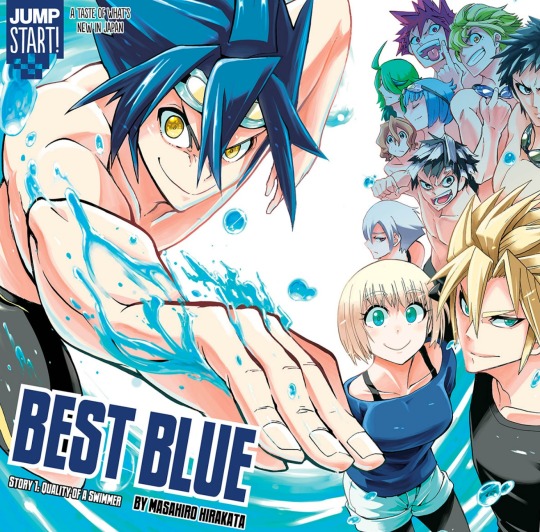
Shonen sports manga these days all tend to feature a protagonist who is either unskilled or at a disadvantage (often because of height) in his sport of choice, but so extremely passionate that he convinces those around him to give him a chance and, sure enough, he gets better and shows his stuff. Best Blue isn’t much different. The odds stacked against him in this first chapter are almost exactly the same as those Hinata of Haikyuu!! and Hinomaru of Hinomaru Sumo faced in their respective manga; a lack of people interested in their sport, a lack of people to hence train with, and a lack of natural talent. Okay, the last one didn’t apply to Hinomaru, but you get the drift. Best Blue doesn’t play with any conventions with it’s main lead that recent sports manga haven’t repeatedly emphasized. The character himself is perfectly likable; he’s passionate and optimistic, making him easy to get behind. The fact that he doesn’t spout shonen platitudes, overreact, and behaves about as mature as a high school kid would already makes me like him way more than Hinata, though at the same time doesn’t have nearly as interesting a personality, the confidence, nor the depth that makes Hinomaru such a great character either. He’s a character I’m interested in following, but there isn’t anything to him that I haven’t seen before or is necessarily special, and that will need to be rectified at some point down the line.
But while the characters aren’t out of the ordinary, that doesn’t make them or the character interactions in this chapter fall flat. On the contrary, this first chapter succeeds in having really likable, reasonable characters, while avoiding annoying archetypes like unrealistically mean and one-dimensional bullies or assholes. Instead, the focus of the chapter is on the relationship between wannabe competitive swimmer Aono and former swimming ace now lifeguard Kagura. It’s very much a believable, compelling story, as weeks of hard work finally impress Kagura and make him want to help the kid pursue his dreams. There isn’t anything unrealistic or convenient about the set-up; Aono doesn’t even get close to the goal Kagura sets for him even after putting hours of work and effort into the task. Things like fatigue, the need for proper form, and the importance of natural talent are addressed; the chapter makes it clear that just trying hard isn’t enough. The only reason that Aono is even as good as he is comes from the fact that for six years he relentlessly and diligently practiced his swimming. Even so, he only could get so good, and go so far without proper instruction and competition. But, it’s not his talent, but the fact he never gave up that endears Kagura. Aono practiced swimming on his own for six years despite not having any opportunities to exploit or anything to train for. He did it alone. He just did it because he loved swimming. It’s that kind of drive that reignites Kagura’s passion as a swimmer and makes him want to get back in the water himself. A competitive swimmer has to persevere alone no matter how tough it is to keep pushing forward through the water. Aono never stopped reaching his hand out towards his dream, even though no one was there to extend a hand back. Until now.
The artwork in the series compliments the writing; neat, polished, and effective. There is only one brief scene of competitive swimming, but it’s enough to convey the intensity, the exhaustion, and the exhilaration felt by the characters in the moment. Overall, this first chapter is an excellent blend of a solid premise, character writing, and the kind of passion you can only get from a shonen sports manga. On the surface, it hits all the tropes and cliches you’d expect from a modern day Jump sports manga. But after diving deeper into it, I’d say there’s a lot it’s doing right and has to offer. I really enjoyed reading this debut chapter. In fact, I might call it the strongest debut chapter for a Jump Start yet. I’m quite interested in seeing it developed, and hope it succeeds. Viz’s Jump hasn’t run a sports manga regularly since Cross Manage ended, and this could make a fun and refreshing representation for the genre in the service. Here’s hoping that the next chapter goes swimmingly!
One Piece chapter #793 – “Tiger and Dog”
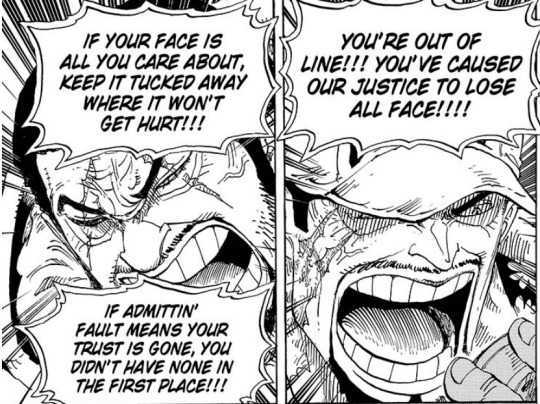
This arc has gone on so long that I kinda forgot something about Doflamingo; he’s a pretty fucking big deal in the world of One Piece. He wasn’t just the maniacal monarch of Dressrosa; in fact, that’s probably the least important thing about him. He was a criminal mastermind who had his hands in many underground organizations of various trades of significant social, political, and economic importance. He supplied weapons to countries that allowed them to support wars; both as aggressors and as defenders. He supplied man-made devil fruits to fuel Kaido’s army. He was the cornerstone of the Shichibukai, and was arguably their strongest and most loyal member after the brainwashed Kuma. He occupied a special place in the power hierarchy of the World Government, being a link between the Tenryubito, the Marines, the Shichibukai, all the way down to low-level pirates, thugs, and civilians. He was a jack of all trades, and a master of them as well. The level of influence he extended was as far-reaching and important to maintaining the order and balance of the world as Whitebeard was. And now it’s all come crashing down.
The fallout for Doflamingo’s defeat is far-reaching and massive. We learn so much in this chapter, it’s astonishing. Doflamingo was under orders from the Tenryubito, who even the World Government’s leaders don’t dare mess with. The scandal of Dressrosa has put trust in the Marines in a precarious position. The status of the Shichibukai has been put under public scrutiny. Wars are forced to end. The pirates who made deals with Joker for SAD and Devil Fruits now have nothing. Kaido has lost SMILE and the source of his devil fruit user army, vital sources of his influence. The alliance of Kidd, Hawkins, and Appo are now going to take advantage of this chaotic state of affairs to go after Shanks. And to top it all off, somebody’s meeting with Uroge, X Drake has allied with Kaido, and, shockingly, Aokiji has teamed up with Blackbeard. The entire world’s been thrown into chaos again, the power structure previously established after the Paramount War is already collapsing, and the ramifications are going to be immediate.
And once again, the Straw Hats have made themselves dangerous new enemies. Frustrated pirates gypped out of SAD are out for revenge. Capone is gunning to capture Ceaser. Fujitora is prepared to hunt them down. And most dangerously of all, they’ve drawn the fury of Kaido, and he will go after them. Of course, the latter is what Luffy and Law wanted in the first place, but he’s no longer their only enemy. Now they’re going to have to deal with Fujitora, Capone, and let’s not forget that Big Mom has a vendetta against the Straw Hats as well; will they be able to handle it? Of course, the allies they’ve made in Dressrosa might add to their alliance, but considering how massive the size of Kaido’s fleet is, even they might not be enough.
But while these developments are fascinating in their implications, the heart of this chapter is really in Fujitora’s fuck you to the World Government’s style of justice. That’s the whole basis for the name of the chapter; Fujitora (tiger) clashing ideals with Akainu (dog). Like Smoker, Fujitora believes justice lies in honor, truth, and integrity; it can’t be twisted or compromised to fit an agenda. It’s about doing right by people. Akainu thinks differently; his justice is about power, laws, and order. His idea of justice is doing right by the World Government. Fujitora wants to help people without regard to bureaucracy, but Akainu wants to preserve the image of the World Government as a global peace-making force. If the truth sullies that image, what is the truth needs to be changed in the public eye. For Akainu, justice serves only to enforce the World Government’s agenda and serve the interests of those in power. However, Fujitora is in a position of considerable power himself. He takes advantage of his rank to expose the WG’s hypocrisy in turning a blind eye to Doflamingo’s evils, and prevent a cover-up of the Dressrosa affair in the same manner as in Alabasta. In doing so, he managed to avenge Smoker and right a justice he always regretted he couldn’t. That’s pretty awesome. Fujitora is pretty awesome, and he has been throughout this entire arc even if his maneuverings in it were often obscured by bigger events and characters around him. And now he’s going after Luffy and Law as the head into war with Kaido as another faction and factor to add to the chaos. He’s a likable, honorable man, making him a strong foil and adversary for the pirate alliance, as well as perhaps a protagonist in his own right. The role he’ll play in the endeavor against Kaido will no doubt be an integral one.
Wow did this chapter got me pumped for whatever the next arc is going to be. It’s made me really optimistic about the direction of the series after a long time. Then again, I felt this way after Punk Hazard ended too and ended up disappointed, but there’s just so much potential and cool stuff here that I can’t not be hopeful for something truly on the level of the Paramount War on the horizon. Please don’t let me down again, Oda.
Food Wars! Shokugeki no Soma chapter #126 – “Booth Battle Strategy Session”
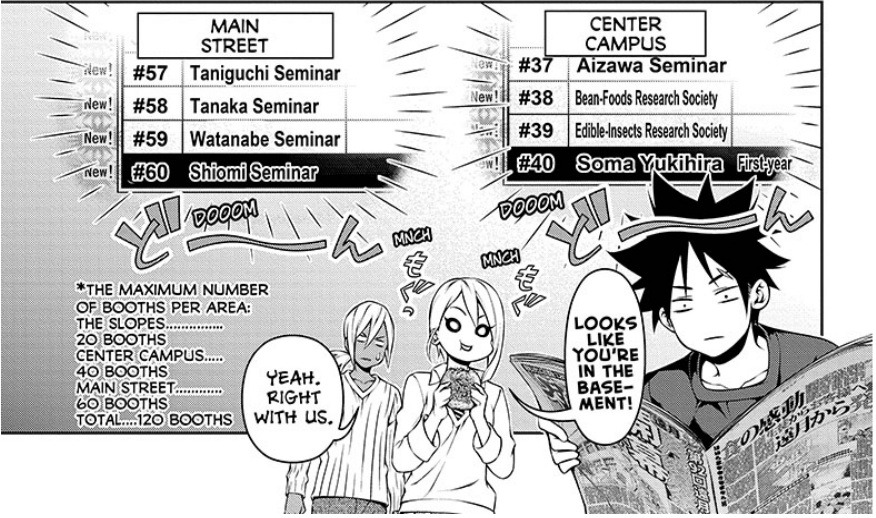
You never know quite what to expect in Food Wars!, even when you think you do. A large part of that comes from the fact that there is no “power-hierarchy” in the series; the skill level of the chef does not always mean that that chef will always win or be on top. Which makes sense, since they are cooks. Cooks don’t have power-levels, and that’s what makes the competitions in the series all the more unpredictable, because the underdog always has a chance to win, and the man on top doesn’t always win. Soma, Hayama, and Kurokiba were all finalists in the Fall Classic and the cream of the crop of the first year students, and yet, they all were totally crushed in sales during the first day of the Moon Festival. On the other hand, the 1st seat of the Student Council and presumably the final opponent of the arc, Tsukasa, is only the #5 most successful student in his group, and Erina, who holds the lowest rank in the Council, is currently beating him as the #2. Both the Aldini brothers and the Donburi Bowl society did extremely well, and they didn’t make it very fall in the Fall Classic themselves. True, some of Soma’s competitors in this arc aren’t gunning for being top in sales rather than improving their cooking skills. That might explain why some of the Council Seats, like Tsukasa and Isshiki, are ranking relatively low compared to their reputations. However, it all just goes to show that there is no set limitations for any characters in Food Wars!; previous rivals are still formidable opponents even after being defeated, and matches with them will always have a strong amount of tension. All of these characters are highly skilled chefs, and any of them could beat the other in a competition that they were more suited for and skilled at.
Of course, it also means that those considered elite, like Kuga, are not at an unreachable level as well. Soma came at the bottom on the first day, but he went up 5 places on the second. We don’t know exactly what his strategy entails, but it seems to be a combination of building up a mystique as well as slowly but surely adding in new dishes. From his conversation with Erina, it’s clear that Soma doesn’t care about outselling Kuga. Remember, his goal was to steal all his customers away from him with his own chinese cooking, not to attract more customers or sell more food overall. Soma’s approach is a slow and steady one that will gradually achieve the results he wants; so long as he attracts all of Kuga’s customers away from him once during the entire Moon Festival, he’s won. It could very well take until the end for it to happen, but sooner or later whatever he’s doing is going to pay off an earn him a #1 spot for the day.
My current hypothesis is that Soma is going around the campus after-hours to sell food to hungry departing customers. This would make sense considering the endings of both this chapter and the next, showing Soma leaving his spot on campus and moving the cart elsewhere, as well as the fact that Tadokoro notices that they should have had more food left over than they did. Because these sales are happening after-hours, they aren’t reflected in the tallies each day. In this way, Soma is secretly amassing a lot of tickets in secret as well as spreading interest in his food and encouraging repeat customers to come during regular hours. All of this eventually building up to Soma attracting more customers than Kuga on the final day of the Festival, as well as having outsold him as well, the latter just being icing on the cake and not even necessary for achieving victory. The only thing that throws me for a loop is who Soma was meeting with in the middle of the night, and what that key he gave him is for. The way it’s staged, I’m not sure if it’s someone in the Polar Star dorm or someone outside, but perhaps that key is for the cart? Could Soma be having someone lug that cart around campus all night long? Just when I think I have it figured out, another mystery factor enters the picture, and I’m eager to know what it is and how it’ll come into play
Alice’s plan might be something similar to Soma’s, but I have a feeling she’ll pull the Shiomi Seminar out of the red precisely because of how spontaneous her booth is. While Alice, Kurokiba, and Hayama make a dysfunctional team right now, the more they work together and get a better sense of what they are doing, the easier it’ll be for them to adapt and make the best use of their resources. Like Soma, they might be at the bottom now, but I see their booth gradually picking up more steam as the Festival continues forward.
This is an awesome chapter for plot development, but the humor was top-notch too. Pretty much every page had some joke or bit of silliness that put a smile on my face. I think my favorite aspect about characters reacting to Soma being in the red is that they are more concerned about Megumi being expelled than they are him. The bit where Erina tries to console Megumi after she scolds Soma and the Shimoi Seminar group for making light of the Fall Classic with their poor results was a nice character moment and sign she’s softened up considerably. Erina’s interactions with Soma also continue to be fairly friendly and constructive, as she shows genuine concern and interest in his success. With the heavy emphasis placed on their relationship in this arc, I’d like to think that a team-up match between them isn’t too far off down the line, and it would be cool to see them cooking together for once, especially since they are both each other’s main rival. For the moment, though, I’m just excited speculating how Soma and the Shiomi Seminar’s plans will come into fruition.
Toriko chapter #330 – “Enounter & Showdown!!”
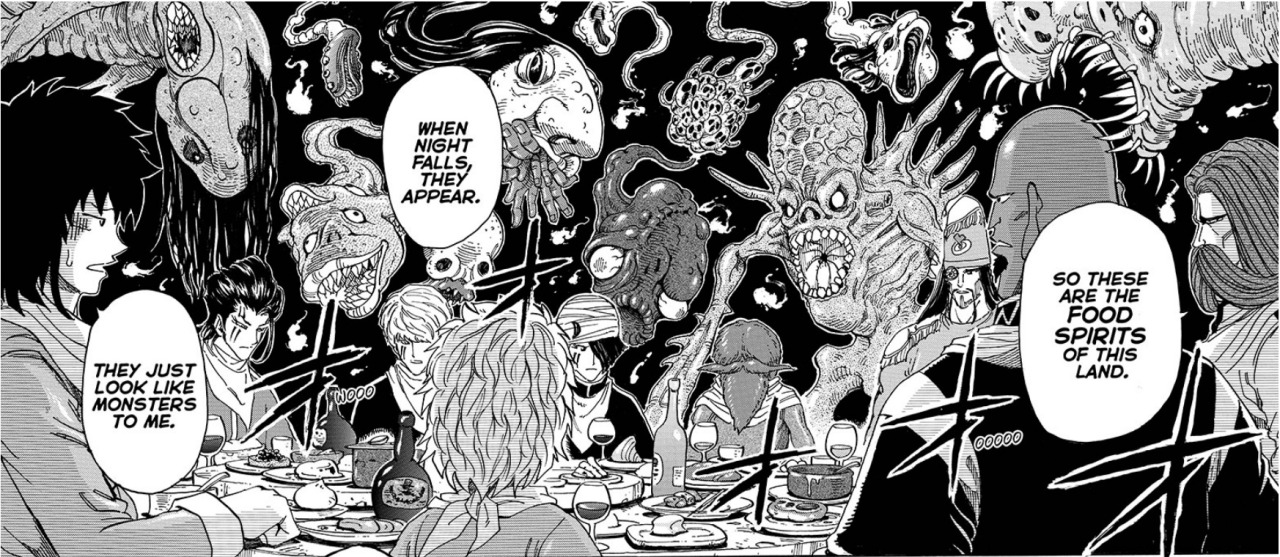
Despite being a series about food, we’ve never really had a cooking competition in Toriko. Sure, the Cooking Festival promised us matches between the top chefs of the human world, but then the Bishokukai invaded before the first match even got started and put an end to that. So, I’m excited at the prospects here. This is very much an arc for Komatsu and the various secondary characters of Toriko to shine, and a lot of them are the cream of the cooking crop. I can only guess, given the focus put on them, that Chiyo, Chin Chin, Aimaru, and Yuda will join Komatsu as competitors. Though that’s assuming that Komatsu will compete; since he’s separated from the group right now, he might get involved in a different story thread, leaving another character to fill his spot. Perhaps Nono will be given a chance to finally show her stuff; after all, she isn’t Setsuno’s assistant for nothing.
There isn’t a whole lot to say about this chapter other than to speculate about what’s coming next. The information given about the food spirits and the Back Channel is intriguing, but nothing deeper than that. I’m curious as to how the little boy Komatsu has befriended and his strange talisman will fall into play. For the purpose of this chapter he exists just to tell Komatsu about the 5 Ten-Shell Chefs of Blue Grill, but Toriko doesn’t often introduce minor characters that don’t do anything at some point in an arc, so there might be more to him than meets the eye. Komatsu was also being eyed by a food spirit, so where that will lead is something I’m curious about too.
I guess the big question on everyone’s mind, though, is whether Warden Love has actually gotten possessed by a food spirit, or the person they encountered in this chapter was just a food spirit that just happened to look similar to her. I’m expecting the latter, since I don’t remember actually seeing Love in any of the group shots in recent chapters, but she might have gone to the Gourmet World with another team and made the mistake of going into the Back Channel without the proper cooking skills like mentioned in this chapter. If that’s the case, it would make a good illustration of the consequences of going into it ill-prepared and put more weight on the line in proving they’re capable in the fight with the 10-Shell chefs. Not that it really needs it. The appeal of these matches is simple enough; seeing long-neglected secondary characters and Komatsu show their mettle in an epic cooking contest. That’s plenty awesome as is, and it has me excited. These next few chapters should be a nice break from the formula of the last two arcs, and Toriko‘s normal style of over-the-top fist-fighting, energy-blasting combat, and I have a feeling it’s going to be quite a treat to read.
Black Clover chapter #21 – “Destruction and Salvation”
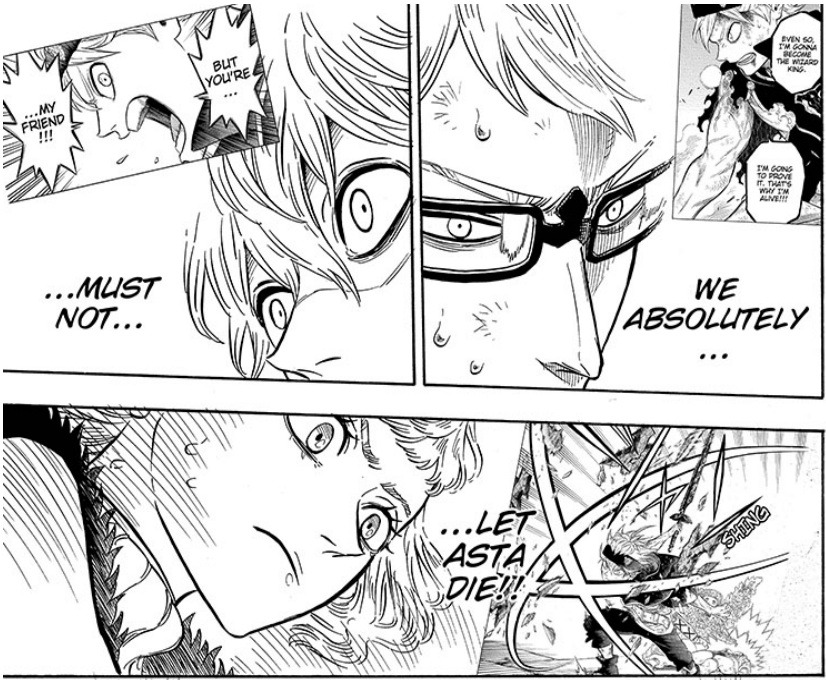
Lots of things are “destroyed” and “saved” in this chapter. Obviously, the temple is destroyed and both Asta and Mars are saved, but I mean on a deeper level. Destroyed is the prejudice the captain held for Yuno and Asta because of their poor upbringing, as is Mars’ distrust of people shattered by being rescued by his captain and remembering a detail to his past he had long forgotten. As a result, his soul finds salvation, and he’s finally able to move on and mature as a person. This isn’t deep stuff, but it’s an interesting direction to take. I like that Yuno’s captain is ashamed of how he treated him and Asta and apologizes, indicating a more amicable relationship and character growth between them. And I appreciate Mars’ character being developed and a potential character arc set out for him. It’s clear that Lotus and Mars will return sometime down the line, either as enemies or allies, and it’ll be interesting to see what Asta and Mars’ next interaction will represent for the development of both of their characters.
It is rather odd that Mars just forgot that his friend saved his life before, but I suppose the trauma of killing her pushed that memory back far into the recesses of his mind. It’s a bit cliche in some respects, but it’s a detail that does set his backstory apart from just being a copy of Zabuza’s. Besides, his character is going through a much different direction. He isn’t going to have a redemptive arc, but rather an arc of emotional growth and becoming able to trust and believe in people. In a lot of ways, that’s kind of similar to another Naruto character, Gaara, but the specifics are different enough that I doubt few are going to accuse Tabata of mimicking that as they have done with the Zabuza connection in chapters previous.
There were some small bits in this chapter that I really liked that don’t have to do with anything really thematic. One was how Tabata mirrored both Asta and Mars awakenings with respective close-up panels, both at the bottom of their page. It was a cool touch. I also found everyone’s reactions to the captain apologizing to Yuno to be hilarious, particularly Noelle’s weird square-mouth face. I don’t know why, but whenever I see that image, I can’t help but chuckle. Tabata is pretty adept at making amusing faces. His writing is pretty decent right now too. The series has been steadily improving, a few missteps and missed opportunities aside, and is starting to find ways to set itself apart from it’s predecessors. It still needs to do a lot more to really standout, but this arc was a major step forward, and I’m optimistic it’ll reach a level of quality justifying it’s early popularity.
Bleach chapter #634 – “friend 4”
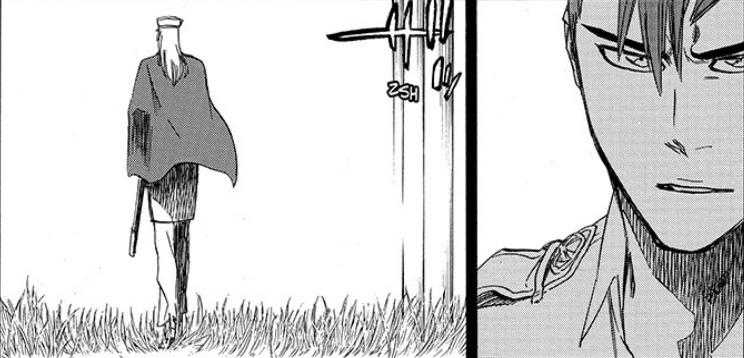
This week’s chapter features possibly the most important reveal in Bleach ever. Yes, it’s even more astonishing than the Aizen twist or the return of Grimmjow! What is it, you ask? Why, it’s what we’ve all been waiting for. After over one hundred chapters, we finally learn Bazz B’s full name! Get ready – are you sitting down? Sit down. Okay. Prepare yourself now. This is going to BLOW… you away. Okay. Here it is. Drum roll please. All right. Here we go. This is going to BLOW… your mind. Okay. No more stalling now. Here it is. Bazz B’s full name is…..Bazzard Black.
….
….
….Why did even I bother making a joke about that? It’s too easy and too lame, I know. But it’s such a dumb as fuck name and a pointless detail to make a big deal of. The fact that Kubo tries to make it seem important and give emphasis to Jugo’s feelings in the fight, even though he yells it with the most stoic expression ever on his face, is amusingly worthless. It’s stuff like this you have to talk about in Bleach chapters most of the time these, days, because Kubo does so little else of interest with the series on a per chapter basis.
Still, I wish I had thought more about the contents of last week’s chapter, because I’ve since realized how hypocritical and self-pitying Bazz B’s point of view in this flashback is. Bazz B said he wanted to kill Ywach, so where did his resentment that Jugo was considered better than him come from? What did that matter to him? If anything, he should have been elated that Jugo was going to get so close to Ywach; it would’ve given them ample opportunities to enact their revenge. Yet, for some reason he’s pissed off that Jugo’s stronger than him and forgets that he wanted to kill Ywach in the first place. Or, at least, it became second priority to him. And why? Because he’s prideful? Bazz B’s “friendship” with Jugo seemed to only be born out of pity and self-interest on his part. He considered him a minion; someone lesser and inferior to him. If he thought of him as a true partner and really cared more about killing Ywach rather than being acknowledged for power, there shouldn’t have been any rift between them. But no, Bazz B gets pissed off at Jugo just because Ywach chooses him as his second in command and ignores him, and in lashing out against him, he effectively broke their friendship and their partnership and made Jugo become the loyal devotee of Ywach he is today. Bazz B, for some reason, suddenly became obsessed with winning against Jugo, and really only out of spite. For a backstory that was seemingly designed to make Bazz B sympathetic, it had pretty much the opposite effect. The backstory tells us that Bazz B is a dumb, hypocritical jerk with an inferiority complex; hardly a likable or tragic fellow.
If this backstory did anything right, it was making Jugo a more rounded, interesting character; showing his motivations and why he might be loyal to Ywach. It actually makes him a bit likable too, as we see him not lift a finger against Bazz B even though the latter tried to attack him constantly, and he even protected him against other Sternritters who wanted to kill him. Even after all the shit Bazz B said and did to him, he still cared about his friend all the way until the very end. Maybe Bazz B realized this. Maybe he recognized, right before he died, that his anger was misplaced and he was a fool to treat someone who considered him a friend the way he did. Too little, too late. Bazz B reaped what he sowed, and I’m happy to see him get his comeuppance.
To be fair to Kubo, I think that that was the point of the backstory in the first place. It wasn’t about Bazz B so much as it was about Jugo. After all, he’s the actual important character between them, and the one who’s had much more of a role to play in this entire arc. The emphasis on Jugo has me a little curious as to what his endgame really is. What I’m expecting will happen is the reveal that he never really gave up on killing Ywach; rather, he became devoted to a deep undercover strategy to gain Ywach’s trust and then off him at an opportune moment. It’d essentially be a repeat of what Gin’s relationship to Aizen was, but it’s not like Kubo is afraid of repeating himself or anything. It’d probably pan out the same way too, but hey, it’d give this character something more meaningful to do, at least. With this battle finally over, I’d like to move on to something more interesting and effective in getting this arc over with. Let’s hope that the various other battles with Ywach’s remaining subordinates don’t take nearly as long each so we can get to the final battle between Ywach and Ichigo before the end of the year.
As as side-note, one thing I genuinely liked about the battle between Bazz B and Jugo was how Bazz sets up his ultimate attack and fires it at Jugo in a two-page spread, and then on the very next page Jugo’s just side-stepped it and cut Bazz down in a single, small panel on the top of the page. It drives home the point of how insignificant Bazz B really is, and always was, very nicely, and was actually a clever bit of writing on Kubo’s part.
My Hero Academia chapter #50 – “Kill ‘Em Dead”
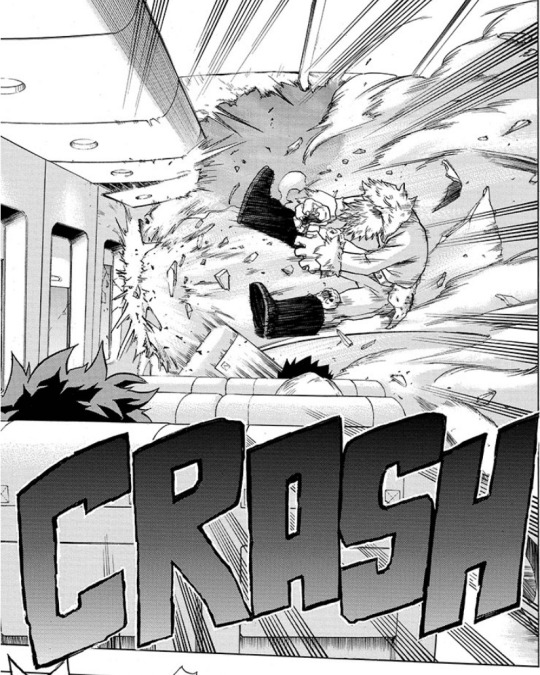
It’s interesting that MHA currently has two villains that seem to do similar things, but their reasons for doing so is completely different. Even though he only comments about it in a snide remark, Hand-face’s completely right that he and Stain have fundamentally different goals in tracking down and slaughtering heroes. Hand-face simply hates heroes and wants to kill and cause destruction. But Stain isn’t just killing for killing’s sake. Stain wants to weed out those who are only pretending to be heroes; the one’s obsessed with fame and money rather than helping people. Hand-face criticizes how the crime-rate in the cities where Stain goes have all actually gone down as a sign of his failings, that he’s breeding heroes rather than killing them. But that seems to be what he really wants. He wants “real” heroes to prosper; he’s only after the fakes and phonies. He doesn’t want crime and chaos to take control; he wants to weed it out of those who claim to fight for justice but really just fight for their own selfish interests. Hand-face doesn’t really seem to get that, and I have a feeling that their lack of understanding will lead to a break in their partnership sooner rather than later.
The reason why Stain is killing heroes is important, because it’s the reason why he ultimately decides to kill Ida. When Ida first attacked him, it would have been an easy matter for Stain to have taken him out then and there, but he made sure to only knock off his mask and ask him what his intentions were first. It seemed he wasn’t going to go after Ida because of his age, and he told him to leave. It was only after he noticed Ida was out for revenge, and Ida went and did a bombastic, self-indulgent speech that Stain said he was going to kill him. Hand-face would have just killed Ida then and there, but Stain kills only certain people. And now Ida’s landed on his list.
Perhaps Blue Jeanist should’ve recruited Ida as well, because he’s got just as much of a lesson to learn as Bakugo does. The only reason he went to Hosu was to find and get revenge on Stain. That’s not what a hero does. A hero doesn’t have the right to arrest or punish criminals; a hero fights for what’s right and to help people. But Ida’s not fighting for anyone else right now, not even his brother. He’s only fighting to satisfy his own sense of pride. In pursuing revenge, he’s overstepped his bounds and has done against what a hero fundamentally should be. And if all the foreshadowing has meant anything, he’s going to realize that the hard way.
Dragon Ball chapter #2 – “No Balls!”
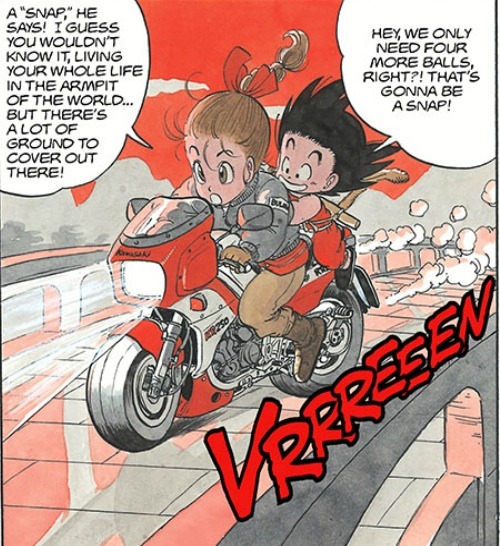
Ah, the infamous “No Balls!” chapter. That scene at the end is probably among the few famous Dragon Ball moments that has nothing to do with fighting. It’s also a good example Dr. Slump‘s style of innocent dirty humor influencing the tone of these early chapters, alongside the preceding tail scene. It’s more memorable because of how out-there it is for the series, since it never goes that far again after a certain scene with Master Roshi coming up, than it is really all that funny in of itself, but you got to give Toriyama credit for not having it be just a throwaway joke and have it have a role in the plot later on, as well as inspire a running gag that pops up every now and again in the rest of the arc. The comedic timing and layout of the panels on the page is also just pitch perfect, and shows just how adept and skilled Toriyama really is as a sequential artist.
This chapter does a whole lot to build up both the world of Dragon Ball as well as further develop the characters of both Goku and Bulma. We learn that the world has exceptionally advanced technology thanks to the existence of the “Hoi-Poi” capsules, but from the interior of the house we see that the way people live as far is pretty normal (though still strange for Goku). We learn that Goku really does have a monkey tail, and that that’s abnormal, indicating that Goku is special in more way than we might have first realized. We also learn that Goku doesn’t have any parents to speak of and was only raised by his grandfather, adding to the mystique of his origins, but also justifying why he’s as naive a hick as he is. We find out what kinds of things he’d normally eat, we learn his age, and Bulma’s as well, and we also find out that Bulma is a high-schooler on her summer vacation and are given a time-limit as to when they need to collect all 7 balls.
All of this might just seem like straightforward exposition, but that’s why this chapter is brilliant. It flows so cleanly as a series of conversations and interactions between Goku and Bulma that you forget that nothing is really happening, but you absorb all the information and enjoy the ride and payoff to the chapter all the same. It’s the kind of subtle, masterful combination of great humor, art, pacing and writing that makes almost every chapter of the series, even the ones where characters aren’t doing much, so effective, and few other mangaka can pull it off in quite as well as Toriyama can. Unlike some other battle manga, Dragon Ball doesn’t out slow and get good over time. It starts out good from the onset, and only gets better as Toriyama gets a better sense of his characters and what he wants to do, quickly moving the series away from the shadow of Dr. Slump and into it’s own thing.
Final Thoughts:
This should’ve been the issue I came back on. It may have been short, but every chapter was strong in it’s own right. Yes, even Bleach, if only because it intentionally had something interesting to think about and analyze on a character level and did what it was meant to do well. Not that it was a genuinely good chapter, but it was as good as Bleach gets these days so I appreciated it. The rest of the chapters were genuinely great, and showed many of these series at the top of their game. I was very pleased, and I hope for another strong turnout next week.
Best Manga of the Week:

1. Food Wars! – A great combination of fun character moments, great humor, and the continuation of the mystique behind Soma’s scheme. It was the chapter I had the most fun reading this week, and it’s got me wildly guessing as to what Soma’s up to, and where the series is going next.
2. One Piece – An excellent look at the ramifications of Doflamingo’s defeat upon the One Piece world at large, featuring the development of some major plotlines sure to influence the upcoming arc and have lasting ramifications on the series as a whole. Not to mention the clash of words between Fujitora and Akainu did a lot to strengthen the former’s character, as well as establish him as a man to keep an eye on as the series continues.
3. My Hero Academia – I’m surprised we got to this point so quickly, but the ideas expressed here make it all the more intense and interesting. The battle between Stain and Ida will not be a pretty one, and I can’t wait to read it.
4. Best Blue – A strong opening debut for a new sports manga with much potential and promise. It might not be the most original entry in the genre, but it’s got it’s heart in the right place and strong artwork and likable characters to back it up. I’m hoping for some good things from this series, since we’ve been long overdue for the addition of a good sports manga in Viz’s Jump since Cross Manage ended two years ago, and this could fit the bill nicely.
Line(s) of the Week:
Bulma: “Guys have…? No, no, they can’t….! But…it’s not like I’ve really seen a guy’s naked butt before…I knew they had something in front, but…”
– Dragon Ball
Panel(s) of the Week:
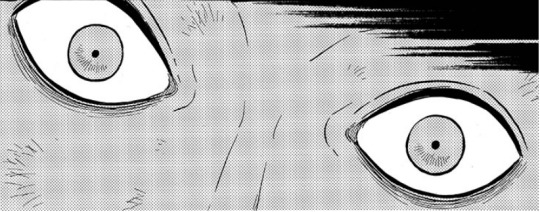
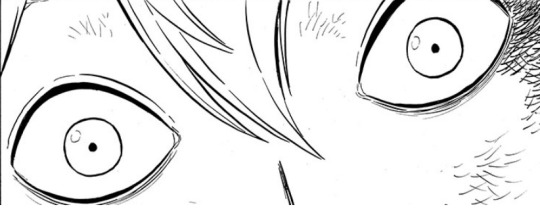
Page(s) of the Week:
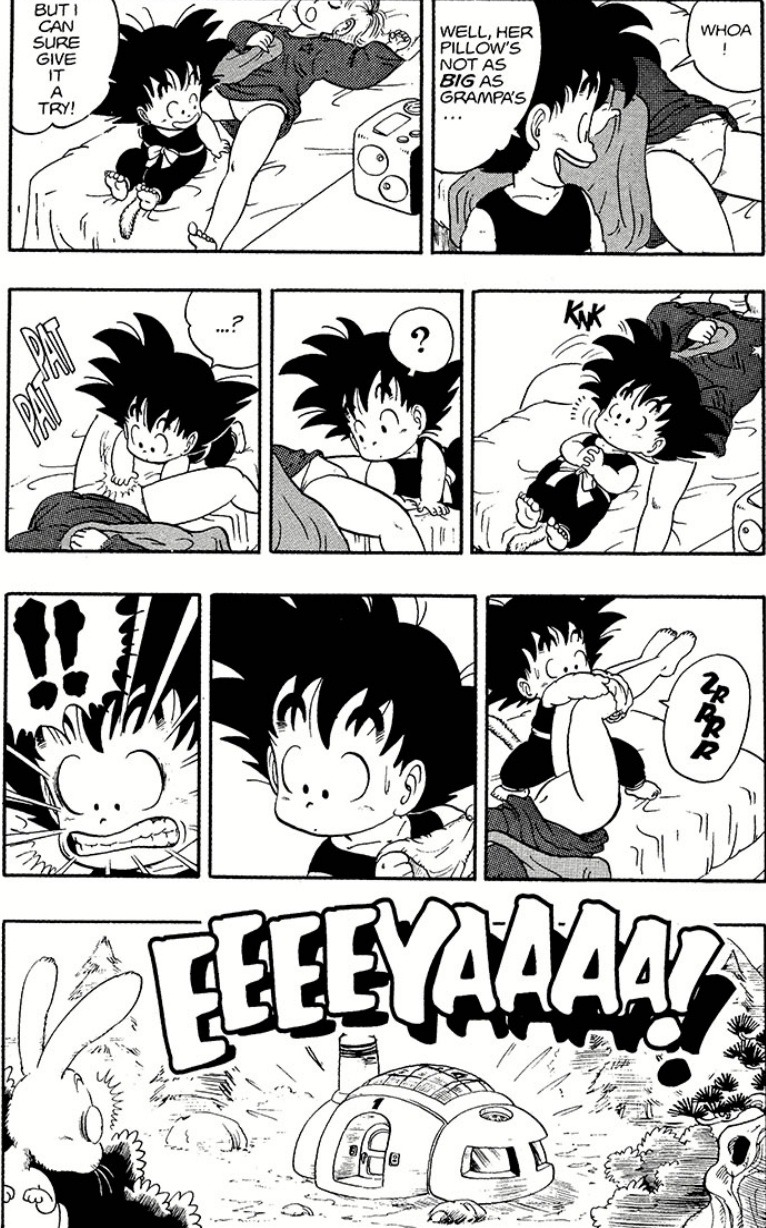
And that does it for this issue! Next week should feature the return of World Trigger and Nisekoi and another good ol’ 200+ page issue to review. Until then, play some J-Stars, try to bear with Super, and make a trip to your local B&N to score some deals, and I’ll see you again after the jump!
